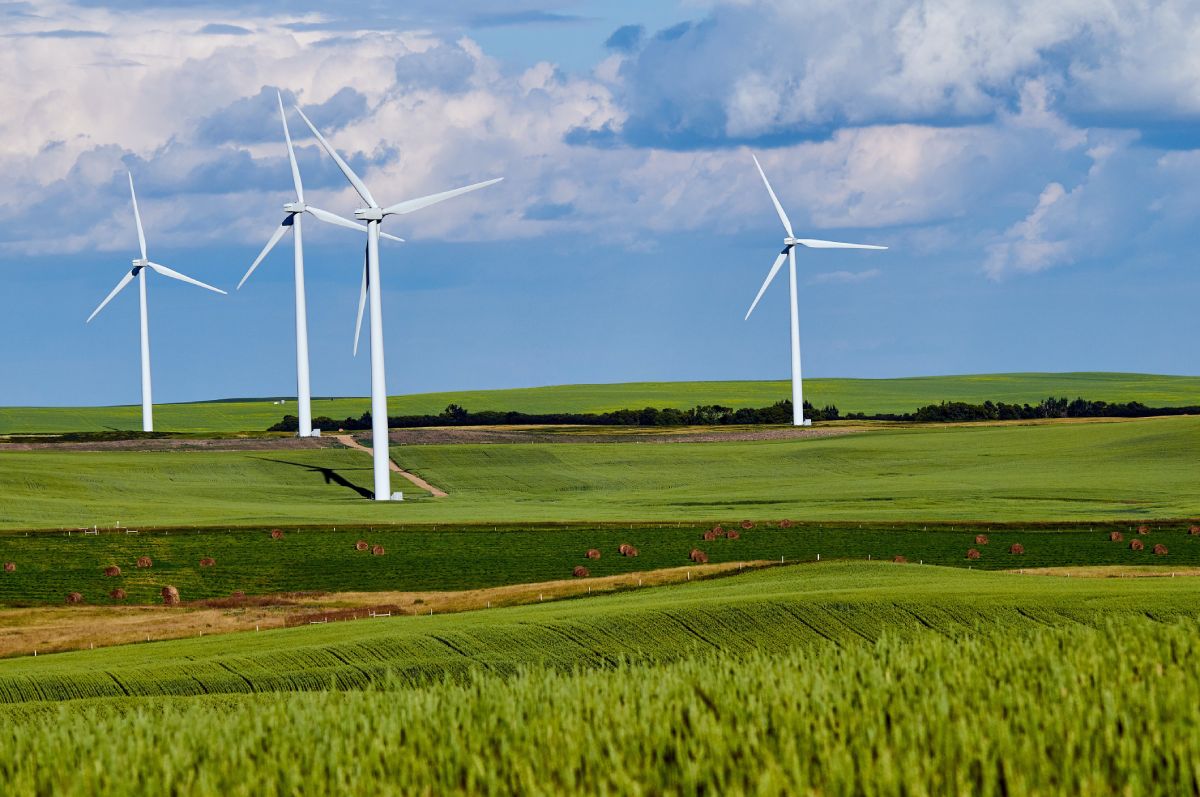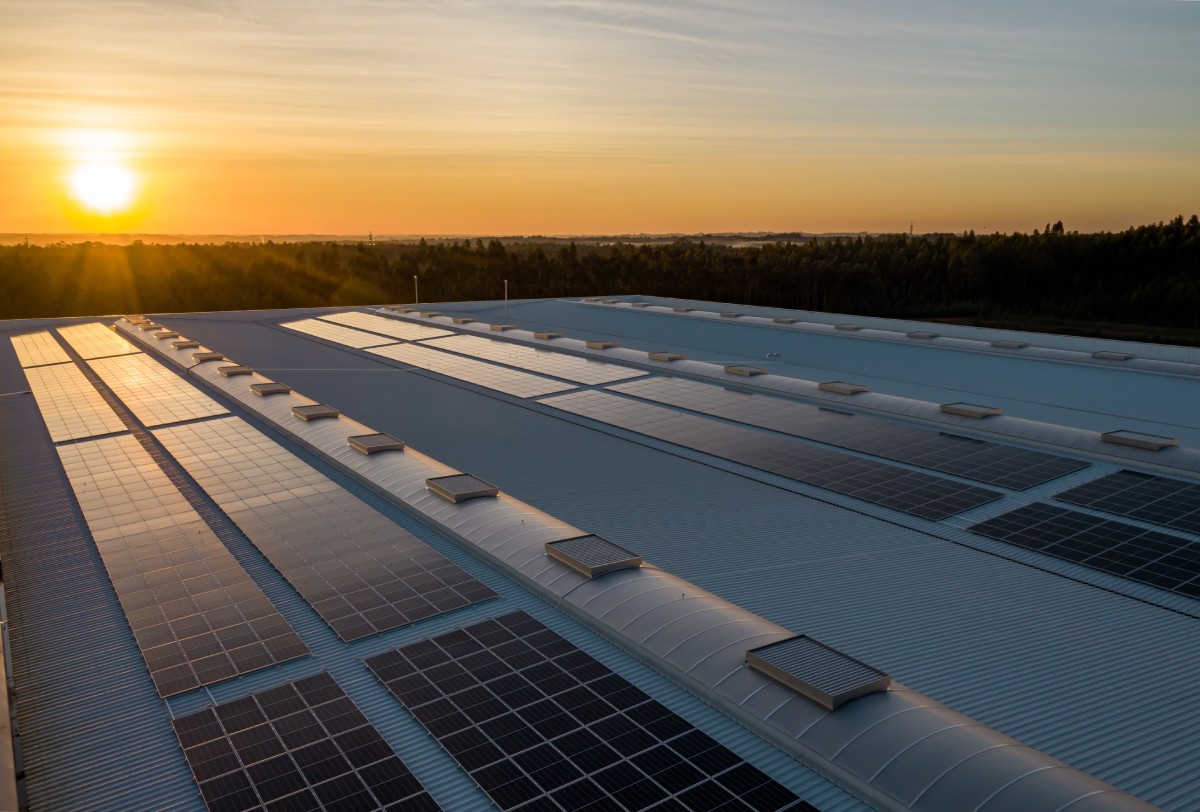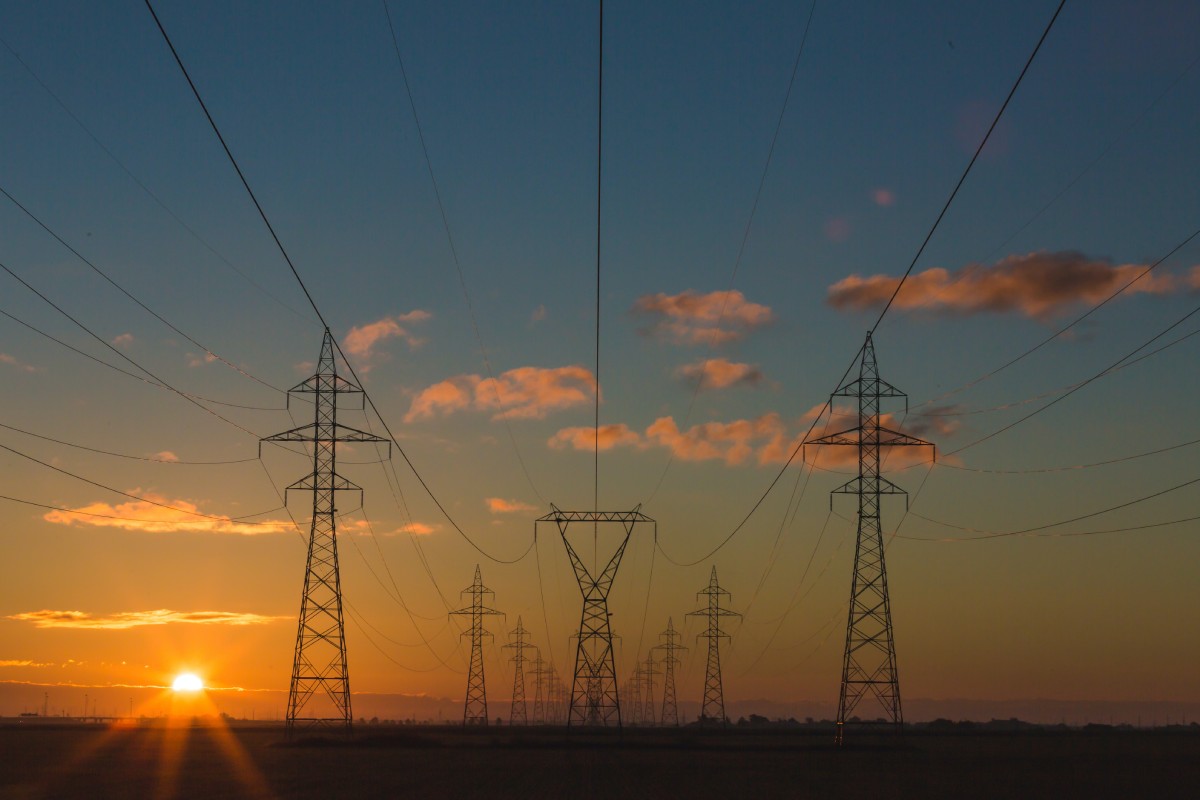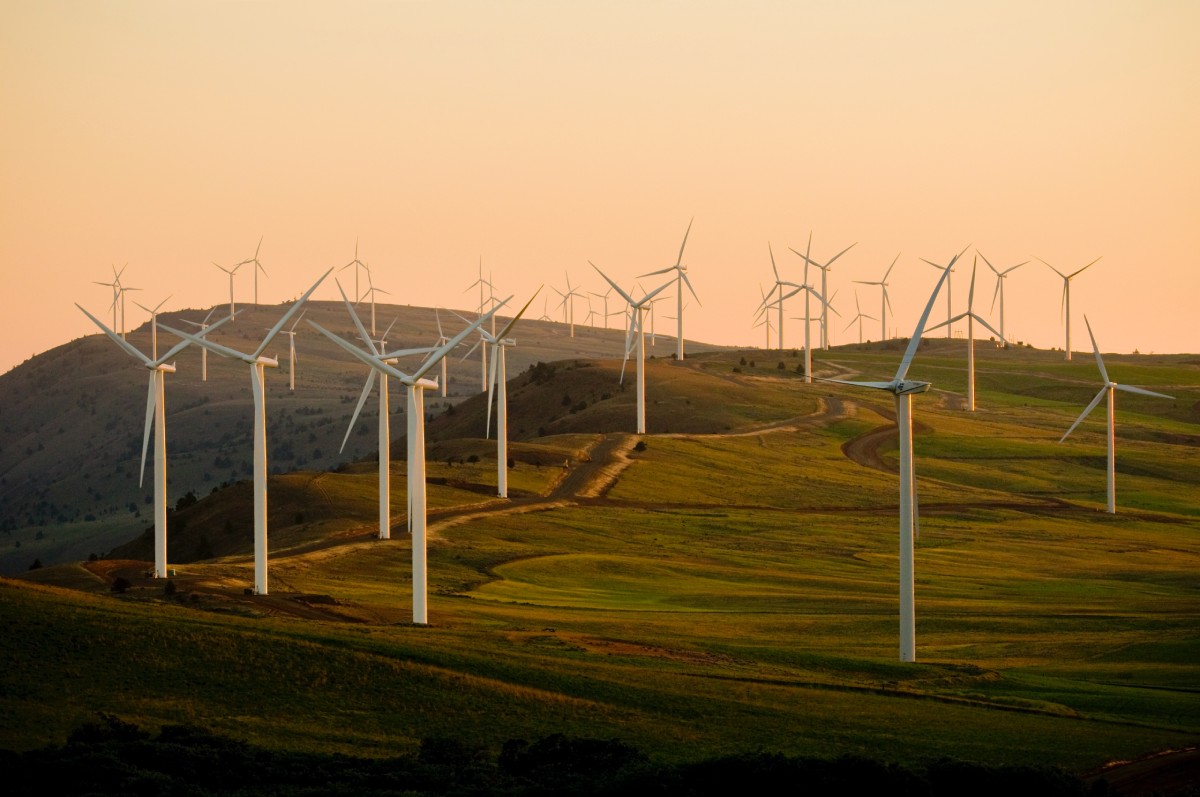Introduction
The transition to renewable energy sources is of utmost importance in today’s world, as we seek sustainable alternatives to meet our growing energy needs. This article will focus on three major renewable energy sources: solar power, wind power, and hydro power. By harnessing the power of the sun, wind, and water, we can significantly reduce our reliance on fossil fuels and mitigate the harmful effects of climate change.
The Importance of Transitioning to Renewable Energy Sources
The world’s heavy dependence on fossil fuels, such as coal, oil, and natural gas, has led to detrimental environmental consequences, including air pollution, greenhouse gas emissions, and climate change. It is crucial to shift towards renewable energy sources that are clean, abundant, and have a significantly lower impact on the environment.
Renewable energy sources offer numerous advantages over fossil fuels. They produce little to no greenhouse gas emissions during operation, helping to mitigate climate change and reduce air pollution. Furthermore, they are inexhaustible and can be harnessed indefinitely, providing a long-term and sustainable energy solution.
Exploring Solar, Wind, and Hydro Power
In this article, we will specifically delve into solar power, wind power, and hydro power, as these sources have emerged as prominent contributors to the renewable energy landscape.
Solar power harnesses the abundant energy from the sun and converts it into usable electricity. Solar panels, typically composed of photovoltaic cells, capture sunlight and convert it into direct current (DC) electricity. Through inverters, the DC electricity is then transformed into alternating current (AC) electricity suitable for powering homes, businesses, and even entire communities.
Wind power utilizes the natural force of the wind to generate electricity. Wind turbines, consisting of large blades and a rotor, capture the kinetic energy of the wind and convert it into mechanical energy. This mechanical energy is then converted into electrical energy through a generator within the turbine. Wind power is highly scalable and can range from small individual turbines to large wind farms capable of generating substantial amounts of electricity.
Hydro power harnesses the energy of moving water to generate electricity. This is achieved through the use of water turbines, which are driven by the force of flowing or falling water. Hydro power can be derived from various sources, including rivers, dams, and tidal movements. It is a mature and well-established technology that has been used for centuries to generate reliable and renewable energy.
By exploring the intricacies of these renewable energy sources, we can gain a deeper understanding of their potential and the role they can play in our transition to a cleaner and more sustainable energy future.
In the following sections, we will delve into the specifics of solar power, wind power, and hydro power, examining their benefits, applications, and the challenges they face in wider adoption. Let’s explore the power of renewable energy and its potential to shape a greener and more sustainable world.
Solar Power
Solar power is a versatile and abundant source of renewable energy that harnesses the energy from the sun and converts it into electricity. This section will provide an introduction to solar power, delve into the photovoltaic (PV) technology behind it, explore different types of solar panels, and highlight real-life applications of solar power.
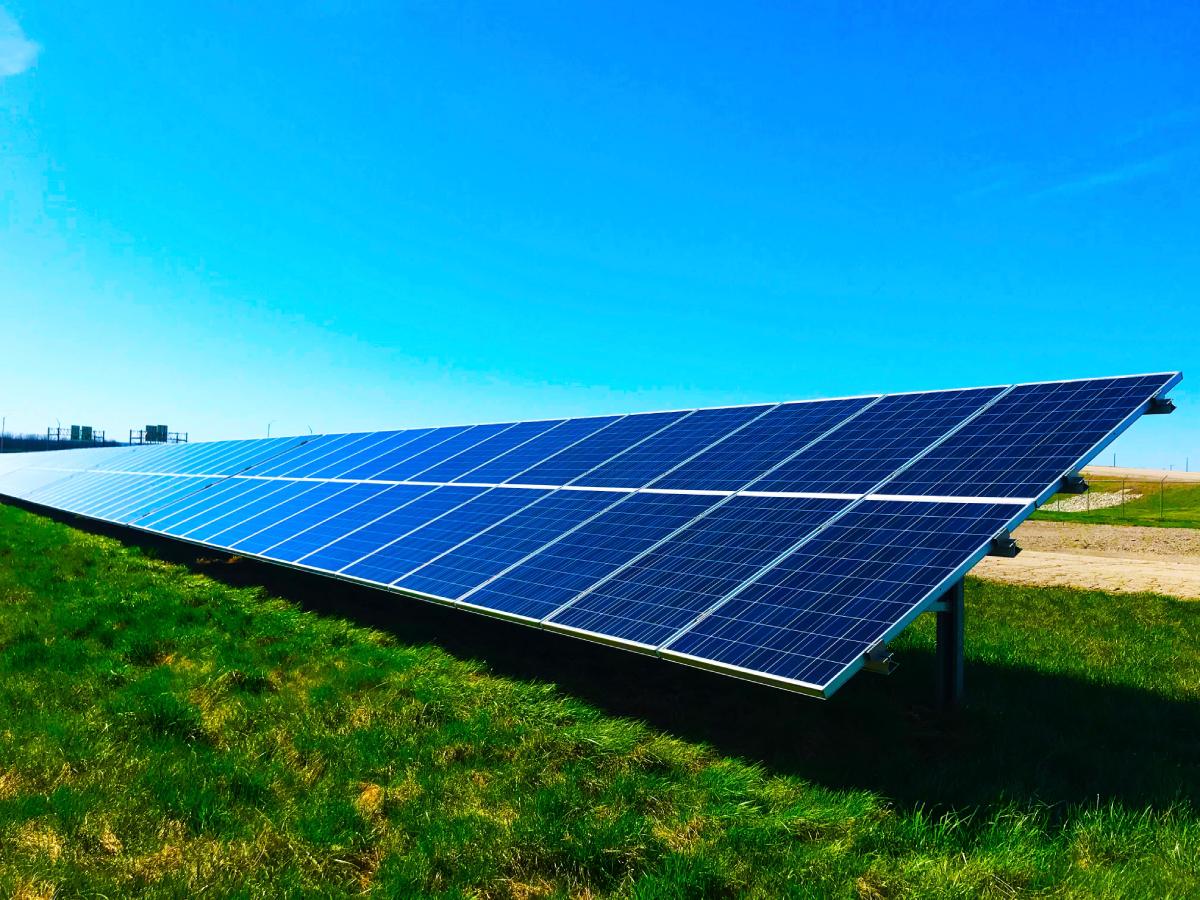
Introduction to Solar Power and its Benefits
Solar power offers numerous benefits as a renewable energy source. It is clean, abundant, and sustainable, with the potential to significantly reduce greenhouse gas emissions and mitigate climate change. By utilizing solar energy, we can reduce our reliance on fossil fuels and transition towards a more sustainable and environmentally friendly energy system.
Solar power systems have a long lifespan and require minimal maintenance, making them a reliable and cost-effective energy solution in the long run. Additionally, solar power can be generated locally, reducing the need for extensive transmission infrastructure and enabling communities to have greater energy independence.
Photovoltaic (PV) Technology and Conversion of Sunlight into Electricity
At the heart of solar power generation lies photovoltaic (PV) technology. PV cells are the building blocks of solar panels, and they convert sunlight directly into electricity through the photovoltaic effect. When sunlight strikes the PV cells, the photons in the sunlight’s energy dislodge electrons from their atoms, creating an electric current.
The PV cells are typically made from semiconductor materials, such as silicon, that have specific electrical properties. These materials allow for the efficient conversion of sunlight into electricity. As the electrons flow through the PV cells, they generate a direct current (DC) electricity that can be used to power various devices or be converted into alternating current (AC) electricity through inverters for use in homes, businesses, and the electrical grid.
Exploring Different Types of Solar Panels and Their Efficiency
There are different types of solar panels available, each with its own characteristics and efficiencies. The most common type is the monocrystalline silicon solar panel, which is made from a single crystal structure and offers high efficiency. Polycrystalline silicon solar panels, on the other hand, are made from multiple silicon crystals and are slightly less efficient but more cost-effective.
Thin-film solar panels, including amorphous silicon, cadmium telluride, and copper indium gallium selenide (CIGS), offer flexibility and are suitable for applications where weight and aesthetics are important. Although they tend to have lower efficiencies compared to crystalline silicon panels, thin-film panels excel in certain scenarios, such as in building-integrated photovoltaics (BIPV) or portable solar devices.
Researchers are continuously working to improve the efficiency and performance of solar panels. Emerging technologies, such as perovskite solar cells and tandem solar cells, show great promise in achieving even higher efficiencies and reducing the cost of solar power.
Real-Life Applications of Solar Power
Solar power finds diverse applications across various sectors. In residential settings, solar panels can be installed on rooftops to generate electricity for homes, reducing dependence on the electrical grid and lowering utility bills. Commercial buildings and institutions can also benefit from solar power installations, offsetting their energy consumption and reducing their environmental impact.
Solar power is particularly beneficial in off-grid areas and remote locations where access to traditional electricity infrastructure is limited. It can provide electricity for lighting, water pumping, telecommunications, and other essential needs, improving living conditions and enabling economic opportunities.
Large-scale solar power plants, also known as solar farms or solar parks, contribute significantly to the renewable energy mix. These facilities consist of a vast array of solar panels, capturing sunlight and converting it into a substantial amount of electricity to power communities and industries.
Solar power is a versatile and sustainable energy solution that continues to gain momentum globally. With advancements in technology, increased efficiency, and falling costs, solar power is poised to play a pivotal role in the transition to a cleaner and more sustainable energy future.
Wind Power
Wind power is a renewable energy source that harnesses the power of the wind to generate electricity. In this section, we will provide an introduction to wind power, explain how wind turbines generate electricity, discuss onshore and offshore wind farms, and explore the challenges and innovations in the wind power industry.
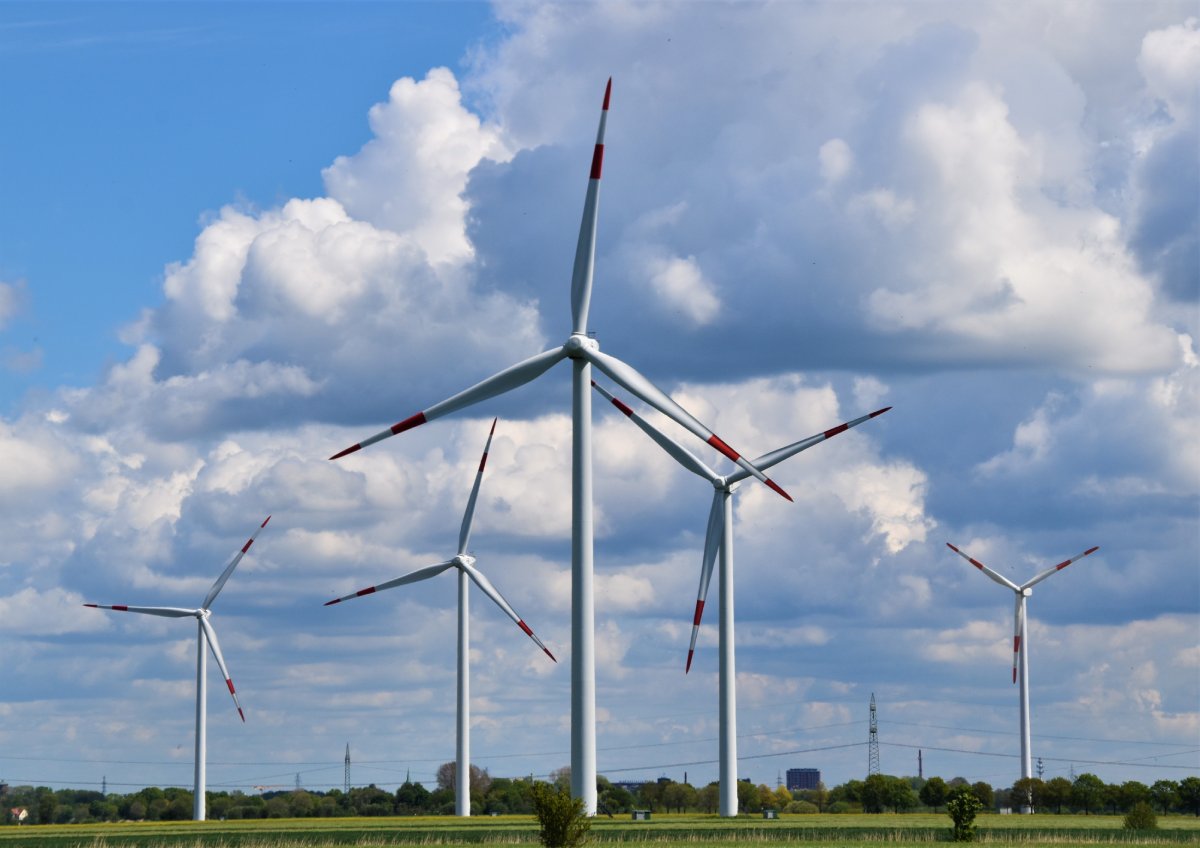
Introduction to Wind Power and Its Advantages
Wind power is a clean and abundant source of energy that offers numerous advantages. It is a sustainable solution that produces zero greenhouse gas emissions during operation, helping to mitigate climate change and reduce reliance on fossil fuels. Harnessing the power of the wind also reduces air pollution and improves air quality, contributing to healthier communities.
One of the key advantages of wind power is its availability. Wind is a renewable resource that is abundant in many regions worldwide. By tapping into this natural resource, we can create a reliable and consistent source of electricity.
Wind power also brings economic benefits. Wind farms create jobs in manufacturing, installation, and maintenance, stimulating local economies. Additionally, wind energy reduces dependence on imported fossil fuels, enhancing energy security and promoting energy independence.
How Wind Turbines Generate Electricity
Wind turbines are the key technology behind wind power generation. These tall structures with large blades capture the energy from the wind and convert it into electricity. The process begins when the wind blows, causing the turbine blades to rotate. The rotational motion drives a generator, which produces electricity.
The design and efficiency of wind turbines have improved significantly over the years. Modern turbines feature aerodynamically designed blades that maximize energy capture. They are also equipped with advanced control systems that optimize performance and ensure safe operation.
Onshore and Offshore Wind Farms
Wind farms, both onshore and offshore, play a crucial role in harnessing wind energy on a larger scale. Onshore wind farms are located on land, typically in areas with favorable wind conditions. They consist of multiple wind turbines connected to the electrical grid. Onshore wind farms have been instrumental in expanding wind power capacity and contributing to the renewable energy mix.
Offshore wind farms, situated in bodies of water such as oceans or large lakes, have gained increasing attention in recent years. These wind farms take advantage of stronger and more consistent winds offshore, resulting in higher energy production. Offshore wind turbines are typically larger and designed to withstand harsher environmental conditions. They have the potential to generate significant amounts of clean energy and play a vital role in decarbonizing the electricity sector.
Challenges and Innovations in the Wind Power Industry
While wind power offers many benefits, there are challenges that the industry faces. One of the challenges is the intermittent nature of wind. Wind energy production depends on the availability and strength of the wind, which can vary over time. To address this, innovations in energy storage and grid integration are being explored to ensure a more stable and reliable supply of electricity.
Another challenge is the visual impact and potential environmental effects of wind farms. Balancing the need for renewable energy with the preservation of landscapes and wildlife habitats is an ongoing consideration. Developers are working on minimizing the visual impact and implementing measures to protect wildlife during the planning and construction of wind farms.
Innovation continues to drive the wind power industry forward. Advances in turbine technology, such as larger rotor diameters and taller towers, allow for increased energy capture and improved efficiency. Research is also focused on developing floating wind turbines, which can be deployed in deep waters, expanding the potential for offshore wind power in regions with limited shallow seabeds.
Hydro Power
Hydro power, also known as hydropower, harnesses the energy of flowing or falling water to generate electricity. In this section, we will provide an introduction to hydro power, explain how water turbines generate electricity, discuss the different types of hydro power systems, and highlight the environmental considerations and benefits of hydro power.

Introduction to Hydro Power and Its Significance
Hydro power is a renewable energy source that has been used for centuries. It utilizes the natural flow of water to generate clean and sustainable electricity. This form of energy is significant because it offers a reliable and constant power supply, making it a valuable contributor to the renewable energy mix.
One of the primary advantages of hydro power is its high energy conversion efficiency. Water has a high density and can carry a significant amount of kinetic energy, which can be converted into electricity. Hydro power plants can achieve conversion efficiencies of over 90%, making them one of the most efficient methods of generating electricity.
How Water Turbines Generate Electricity
Hydro power plants use water turbines to convert the energy from moving water into mechanical energy, which is then transformed into electricity. The process begins with the damming of a river or the construction of a diversion channel to create a reservoir or a water flow with sufficient head and flow rate.
When water is released from the reservoir or flows through the diversion channel, it passes through the water turbines. The force of the water causes the turbines to rotate, which drives a generator connected to the turbines. The generator converts the mechanical energy into electrical energy, which can be transmitted to homes, businesses, and industries through the power grid.
Different Types of Hydro Power Systems
There are different types of hydro power systems, each with its own characteristics and applications. One common type is a dam-based hydro power system, which involves the construction of large dams to create reservoirs. The stored water is released from the reservoir through the turbines to generate electricity. Dam-based hydro power systems provide a stable and reliable source of energy but require substantial infrastructure and may have environmental impacts on surrounding ecosystems.
Another type is run-of-river hydro power, which operates without the need for large dams or reservoirs. Instead, it utilizes the natural flow of a river or a portion of it to generate electricity. Run-of-river projects have a smaller environmental footprint compared to dam-based systems and are often designed to minimize disruption to river ecosystems. However, their power generation may fluctuate depending on the availability of water flow.
Environmental Considerations and Benefits of Hydro Power
Hydro power offers several environmental benefits. It is a clean and renewable energy source that produces negligible greenhouse gas emissions during operation. Unlike fossil fuel-based power plants, hydro power plants do not contribute to air pollution or climate change. Additionally, hydro power provides a reliable source of energy without the need for fuel combustion, reducing the dependence on finite fossil fuel resources.
However, the construction of large dams for hydro power projects can have environmental and social impacts. The alteration of river ecosystems, the displacement of communities, and the loss of wildlife habitats are among the concerns associated with dam-based hydro power. Environmental considerations and careful planning are necessary to minimize these impacts and ensure sustainable development.
In conclusion, hydro power is a significant renewable energy source that harnesses the power of water to generate electricity. Its high efficiency, reliability, and minimal environmental footprint make it a valuable contributor to the global transition toward sustainable energy systems.
Comparing the Three Renewable Energy Sources
In this section, we will compare solar, wind, and hydro power as renewable energy sources. We will examine the factors that determine the suitability of each energy source, discuss their availability, scalability, and intermittency, and explore the geographical considerations for implementing these renewable energy sources.
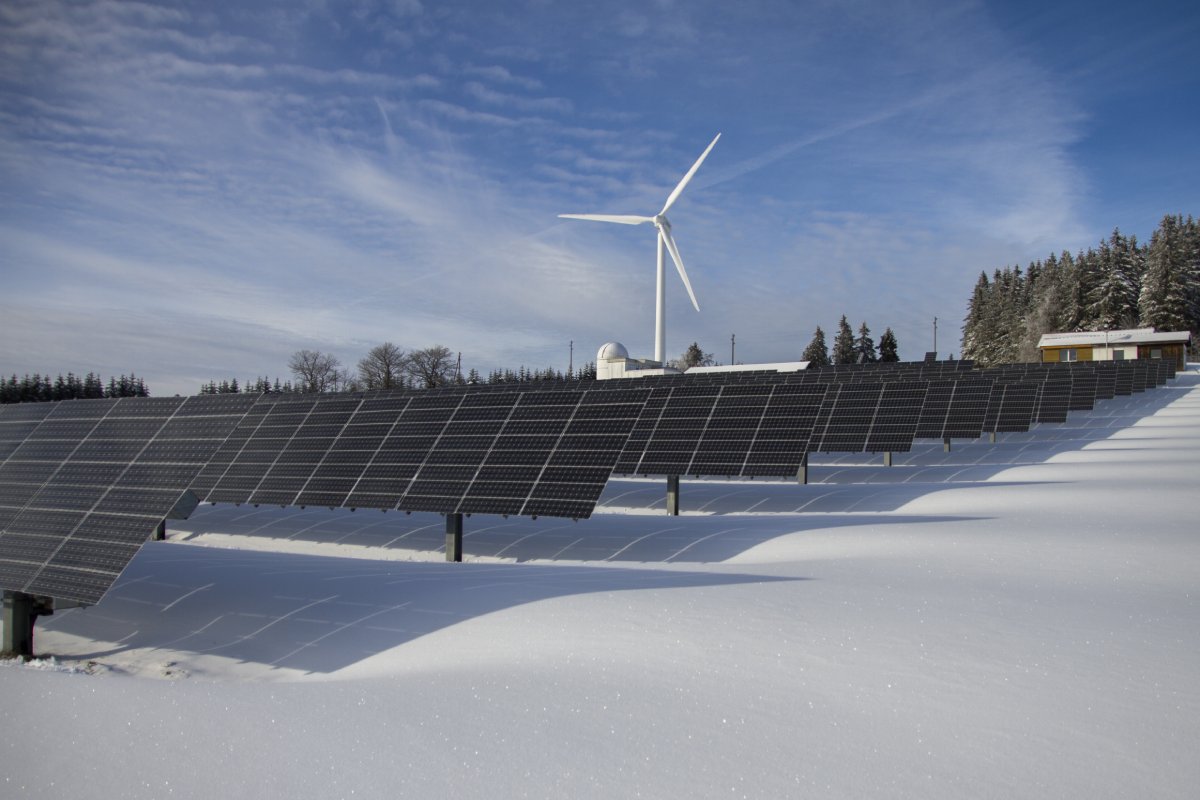
Factors Determining Suitability
The suitability of each renewable energy source depends on various factors. Solar power is well-suited for regions with abundant sunlight. It is highly scalable, as solar panels can be installed on rooftops, open spaces, and even integrated into building materials. Wind power is suitable for areas with consistent and sufficient wind speeds. Wind turbines can be installed onshore or offshore, depending on the availability of suitable wind resources. Hydro power requires the presence of flowing or falling water, making it suitable for regions with rivers, streams, or access to tidal movements.
Availability, Scalability, and Intermittency
Solar power is available everywhere, as long as there is sunlight. It is a scalable energy source, allowing installations ranging from small residential systems to large solar farms. However, solar power is intermittent, as it relies on daylight hours and is affected by weather conditions such as cloud cover.
Wind power depends on the availability of wind resources. It is highly scalable and can be deployed in various sizes, from single turbines to large wind farms. Wind power is also intermittent, as wind speeds fluctuate. However, wind turbines can be located in windy regions and operate effectively throughout the year, especially in areas with consistent wind patterns.
Hydro power relies on water resources, such as rivers, streams, or tidal movements. It provides a continuous and predictable energy source, as water flow is relatively consistent. Hydro power plants can vary in size, from small-scale run-of-river projects to large dams with reservoirs. While hydro power is reliable and less intermittent compared to solar and wind power, it may be limited by geographical constraints and the availability of suitable water resources.
Geographical Considerations
Geographical considerations play a significant role in implementing renewable energy sources. Solar power can be harnessed almost anywhere, but regions with higher solar irradiation receive more energy from the sun, resulting in greater solar power generation potential. Wind power requires areas with consistent wind resources, such as coastal regions or open plains. Geographical features, such as mountainous terrain or building density, can affect wind patterns and influence the viability of wind power installations.
Hydro power relies on the availability of water resources. Regions with abundant rivers, streams, or access to tidal movements have favorable conditions for hydro power generation. However, the feasibility of hydro power projects may be limited by environmental concerns, land availability, and the potential impact on ecosystems and communities.
In conclusion, solar, wind, and hydro power each have unique characteristics and considerations for their suitability as renewable energy sources. Solar power is abundant and scalable but is intermittent due to reliance on sunlight. Wind power is highly scalable and can operate throughout the year, but its availability depends on consistent wind resources. Hydro power provides continuous and predictable energy but requires suitable water resources. Geographical factors, such as solar irradiation, wind patterns, and water availability, are crucial in determining the optimal integration of these renewable energy sources into our energy systems.
Challenges and Opportunities in Renewable Energy
In this section, we will discuss the challenges faced by the renewable energy industry and explore the advancements and innovations in solar, wind, and hydro power technologies. We will also highlight the role of government policies and incentives in promoting renewable energy.
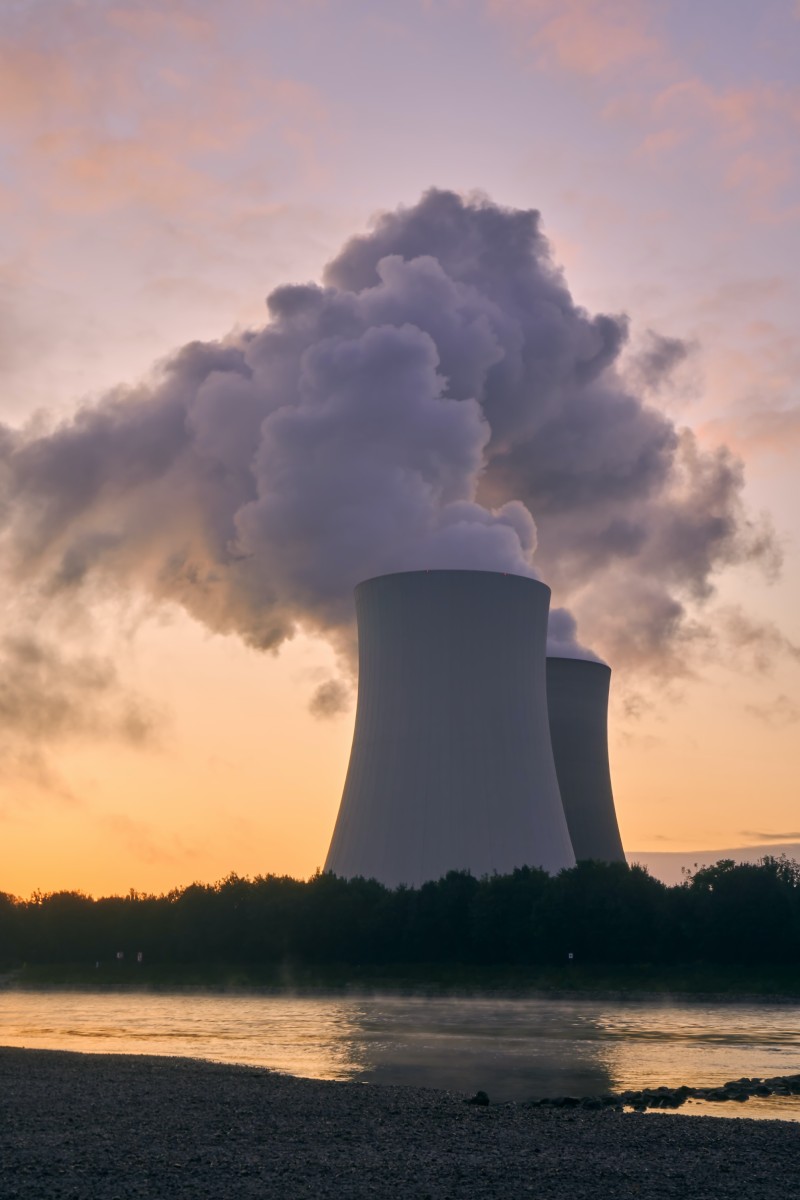
Challenges Faced by the Renewable Energy Industry
The renewable energy industry faces several challenges that impact its widespread adoption and integration into existing energy systems. One significant challenge is the initial high cost of implementing renewable energy projects. While the costs of solar, wind, and hydro power technologies have been declining over the years, the upfront investment can still be a barrier for individuals, businesses, and governments.
Intermittency is another challenge faced by renewable energy sources. Solar power generation is dependent on daylight hours and weather conditions, while wind power relies on consistent wind resources. The intermittency of these sources requires the development of efficient energy storage solutions to ensure a stable and reliable power supply.
Integration into the existing energy infrastructure is also a challenge. The grid systems need to be updated to accommodate the intermittent nature of renewable energy sources and ensure efficient transmission and distribution. This requires collaboration between renewable energy providers, grid operators, and policymakers.
Advancements and Innovations in Renewable Energy Technologies
The renewable energy industry has seen significant advancements and innovations in solar, wind, and hydro power technologies. In solar power, there have been improvements in photovoltaic (PV) cell efficiency, allowing for better energy conversion from sunlight. Innovations in solar panel design, such as thin-film and bifacial panels, have expanded their applications and increased their performance in various conditions.
In the wind power sector, technological advancements have led to the development of more efficient and larger wind turbines. Turbine designs have been optimized to capture more energy from the wind, and advancements in materials and manufacturing processes have improved their reliability and performance.
Hydro power technologies have also seen innovations, including the development of smaller-scale run-of-river projects and innovative turbine designs. Advances in turbine efficiency and fish-friendly designs have addressed some of the environmental concerns associated with large-scale dam projects.
Role of Government Policies and Incentives
Government policies and incentives play a crucial role in promoting the growth and adoption of renewable energy sources. Supportive policies, such as feed-in tariffs and renewable portfolio standards, provide financial incentives and regulatory frameworks that encourage renewable energy development. These policies create market opportunities and attract investments in the renewable energy sector.
In addition to policies, governments can provide research and development funding to accelerate technological advancements in renewable energy. By investing in research and innovation, governments can foster the development of new and improved technologies, making renewable energy more efficient and cost-effective.
Furthermore, international collaborations and agreements can facilitate knowledge sharing, technology transfer, and the development of common standards and best practices in renewable energy.
In conclusion, the renewable energy industry faces challenges related to cost, intermittency, and integration into existing energy infrastructure. However, advancements and innovations in solar, wind, and hydro power technologies present opportunities for overcoming these challenges. Government policies and incentives play a vital role in driving the growth of renewable energy by creating a supportive environment for investment and promoting research and development. By addressing challenges and seizing opportunities, the renewable energy sector can contribute significantly to a sustainable and low-carbon future.
The Future of Renewable Energy
In this section, we will discuss the potential of renewable energy sources in meeting global energy demands, explore emerging technologies and trends in the renewable energy sector, and highlight the importance of continued research and investment in renewable energy.

Meeting Global Energy Demands with Renewable Energy
Renewable energy sources have the potential to play a significant role in meeting global energy demands in a sustainable and environmentally friendly manner. Solar, wind, and hydro power offer abundant and renewable sources of energy that can be harnessed to reduce reliance on fossil fuels and mitigate the impacts of climate change.
Solar power has the advantage of being universally accessible since sunlight is available in varying degrees around the world. With advancements in solar panel efficiency and the decreasing costs of installation, solar power has become increasingly competitive in the energy market. It has the potential to provide a substantial portion of global electricity needs, particularly when combined with energy storage technologies.
Wind power also holds great promise for meeting energy demands. Wind resources are abundant, and the development of larger and more efficient turbines has increased their energy generation capacity. Offshore wind farms, in particular, offer vast potential for harnessing strong and consistent winds in coastal areas. As technology improves and costs continue to decline, wind power is expected to make a significant contribution to global energy production.
Hydro power, although more limited in its geographic availability, remains an important renewable energy source. Large-scale hydroelectric dams can provide substantial amounts of electricity, especially in regions with suitable topography and water resources. Additionally, smaller-scale run-of-river projects and innovative designs can expand the utilization of hydro power in areas with smaller water bodies.
Emerging Technologies and Trends
The renewable energy sector is experiencing a rapid pace of innovation and the emergence of new technologies. One exciting trend is the development of energy storage solutions, such as advanced batteries and pumped-storage hydroelectricity. These technologies enable the storage of excess renewable energy generated during periods of high production for later use, addressing the issue of intermittency and providing a more stable power supply.
Another emerging technology is the integration of renewable energy systems with smart grids and digital solutions. Smart grids enable efficient monitoring, control, and optimization of renewable energy generation, distribution, and consumption. This integration allows for better management of energy resources and enhances grid stability and reliability.
Furthermore, the concept of energy communities and decentralized energy generation is gaining traction. This approach involves local communities producing and consuming their own renewable energy through shared resources, such as community solar or wind projects. Energy communities empower individuals and communities to actively participate in the energy transition and promote a more democratic and inclusive energy system.
Importance of Continued Research and Investment
To realize the full potential of renewable energy, continued research and investment are crucial. Research efforts should focus on improving the efficiency and performance of existing renewable energy technologies, as well as exploring new and emerging technologies. This includes advancements in materials, energy storage, grid integration, and energy management systems.
Investment in renewable energy infrastructure is also necessary to scale up renewable energy projects and make them economically viable. Governments, businesses, and investors should collaborate to create favorable financing mechanisms and incentives to attract capital into the renewable energy sector. Additionally, policies and regulations that support long-term market stability and encourage the transition to renewable energy are essential.
Moreover, interdisciplinary collaborations between scientists, engineers, policymakers, and stakeholders are important for knowledge sharing, innovation, and the development of holistic solutions. By fostering collaboration and investing in research and development, we can accelerate the adoption and integration of renewable energy sources into our energy systems.
In conclusion, renewable energy sources hold immense potential for meeting global energy demands while reducing greenhouse gas emissions and combating climate change. With advancements in technology, emerging trends, and continued research and investment, renewable energy is poised to play a crucial role in shaping the future of the global energy landscape. By embracing renewable energy and transitioning towards a sustainable energy system, we can create a cleaner and more resilient future for generations to come.
Conclusion
In this blog post, we have explored the renewable energy sources of solar, wind, and hydro power and their immense potential in creating a sustainable and clean energy future. Let’s recap the benefits and potential of these renewable energy sources, encourage readers to embrace and support renewable energy initiatives, and inspire action for a sustainable future.

The Benefits and Potential of Solar, Wind, and Hydro Power
Solar power offers a clean and abundant source of energy. Through photovoltaic technology, sunlight is converted into electricity, providing a renewable energy solution that can be harnessed globally. With various types of solar panels available, the efficiency of solar power generation continues to improve. From powering homes to fueling large-scale solar farms, solar power has proven its reliability and scalability.
Wind power harnesses the kinetic energy of the wind to generate electricity. It is a renewable energy source that offers several advantages, including a virtually unlimited supply of wind resources and the ability to generate power on both land and offshore. With advancements in wind turbine technology, larger and more efficient turbines are being developed, increasing energy production and reducing costs. Wind power is a vital component of the renewable energy mix.
Hydro power utilizes the force of flowing or falling water to generate electricity. It encompasses various systems, including large-scale hydroelectric dams and smaller run-of-river projects. Hydro power provides a reliable and consistent source of renewable energy, particularly in regions with suitable water resources. It offers the advantage of storage capacity, allowing for power generation on demand.
Embracing and Supporting Renewable Energy Initiatives
The transition to renewable energy is essential for combating climate change, reducing reliance on fossil fuels, and creating a sustainable energy future. As individuals, we can embrace and support renewable energy initiatives in several ways. First, we can explore renewable energy options for our homes, such as installing solar panels or utilizing wind turbines where feasible. By doing so, we contribute to reducing our carbon footprint and promoting clean energy generation.
Additionally, we can advocate for renewable energy policies and incentives at the local, regional, and national levels. Engaging with community organizations and participating in renewable energy campaigns can raise awareness and encourage policymakers to prioritize renewable energy investments and regulations.
Supporting renewable energy companies and projects is another impactful way to promote a clean energy future. Investing in renewable energy stocks, crowdfunding renewable energy initiatives, or choosing energy providers that prioritize renewable sources are all actions that contribute to the growth and development of the renewable energy sector.
Inspiring Action for a Sustainable and Clean Energy Future
We must recognize the urgency of transitioning to renewable energy sources and taking action for a sustainable future. By embracing renewable energy and reducing our reliance on fossil fuels, we can mitigate the impacts of climate change, reduce air pollution, and foster a healthier planet for future generations.
Educating ourselves and others about the benefits of renewable energy is a crucial step in inspiring action. Sharing knowledge through conversations, social media, and community events can raise awareness and inspire individuals to make informed choices in support of renewable energy.
Furthermore, advocating for clean energy policies, participating in renewable energy research, and supporting organizations working towards sustainable energy solutions are impactful ways to drive change. By working together, we can accelerate the transition to a clean energy future and ensure a healthier, more sustainable world for all.
In conclusion, solar, wind, and hydro power offer significant benefits and potential as renewable energy sources. By embracing and supporting renewable energy initiatives, we can contribute to a sustainable and clean energy future. Let’s take action today and be part of the solution for a brighter tomorrow.

